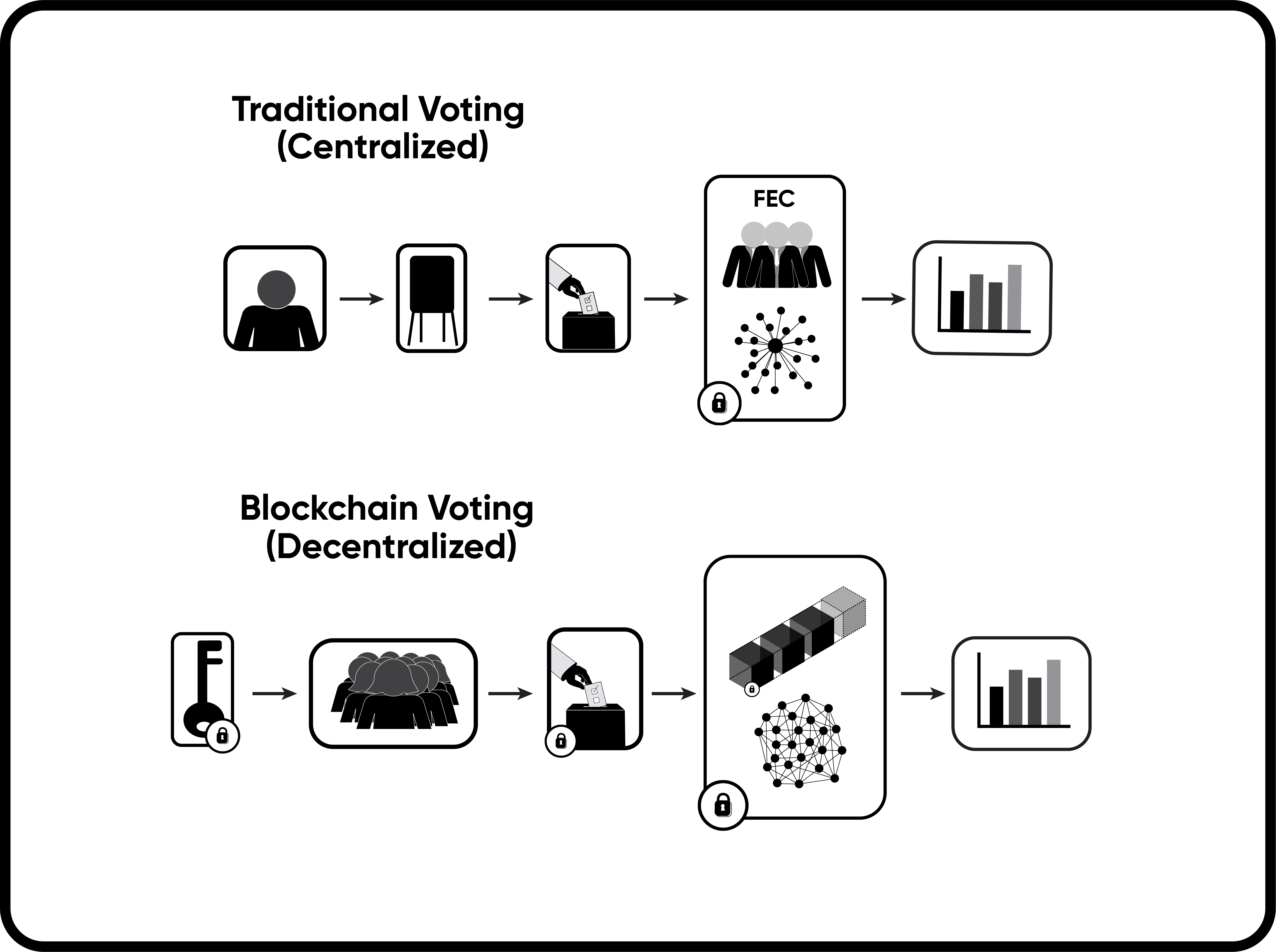How To Use Blockchain For Transparent Voting And Governance
Imagine a world where every vote counts, and the results are impossible to manipulate. A world where every decision is made with complete transparency, and every voice is heard. Sounds like a utopia? Well, with the power of blockchain technology, this world is no longer a distant dream. In this article, we’ll explore how blockchain can revolutionize the way we vote and govern, making the process more transparent, secure, and accessible to all.

- Stablecoins: A Shield Against Crypto Market Turbulence
- Embracing The Crypto Revolution: 5 Nations Leading The Way For Investors
- What Are The Best Privacy Coins For Anonymous Transactions
- What Are Rollups In Ethereum And How Do They Improve Blockchain
- Blockchain: The Unsung Hero Of Cybersecurity
The Power of Blockchain
To understand how blockchain can transform the voting process, let’s first break down what blockchain is. Imagine a digital ledger book that records every transaction, vote, or decision that takes place within a network. This ledger is not stored in one place, but is instead distributed across a network of computers, making it virtually unhackable. Each block contains a record of multiple transactions, and once a block is added to the ledger, it can’t be altered or deleted. This creates an immutable record of every event that occurs on the network.
Transparent Voting
So, how can we use blockchain to create transparent voting systems? Here are a few ways:
- Immutable Records: Using blockchain, every vote cast is recorded on the ledger, creating an immutable record of who voted for whom. This prevents anyone from tampering with the results or altering the outcome of an election.
- End-to-End Encryption: With blockchain, votes can be encrypted, ensuring that only the intended recipient can access the information. This keeps the voting process secure and private.
- Publicly Accessible Ledger: The blockchain ledger is publicly accessible, allowing anyone to view the entire voting history, including every vote cast and every decision made.
Secure Governance
Blockchain is not just limited to voting. It can also revolutionize the way we govern by creating a decentralized and transparent governance model. Here are a few ways blockchain can improve governance:
- Smart Contracts: With blockchain, smart contracts can be created to automate decision-making processes. These contracts are self-executing and can’t be altered or deleted once they’re deployed on the blockchain.
- Decentralized Governance: Blockchain allows for decentralized governance models, where decision-making power is distributed among a network of nodes, rather than being controlled by a single entity.
- Immutable Policies: Blockchain can be used to create immutable policies, which can’t be altered or deleted once they’re deployed on the blockchain.
Real-World Applications
So, how are we using blockchain to create transparent voting systems and governance models in the real world? Here are a few examples:
- Switzerland’s Blockchain Voting System: In 2018, the Swiss city of Zug launched a blockchain-based voting system, allowing citizens to cast votes using their smartphones.
- India’s Blockchain Voting Pilot: In 2020, India launched a blockchain-based voting pilot in the city of Kishanganj, allowing citizens to cast votes using their fingerprints and facial recognition technology.
- Dubai’s Blockchain Governance Model: Dubai is working on creating a blockchain-based governance model, which will allow citizens to participate in decision-making processes using a blockchain-based platform.
The Future of Governance
In conclusion, blockchain has the potential to revolutionize the way we vote and govern. With its immutable records, secure encryption, and decentralized governance models, blockchain can create a more transparent and inclusive decision-making process. As we move forward, we can expect to see more countries and cities adopting blockchain-based voting systems and governance models. One thing is for sure – the future of governance is bright, and blockchain is leading the way.
